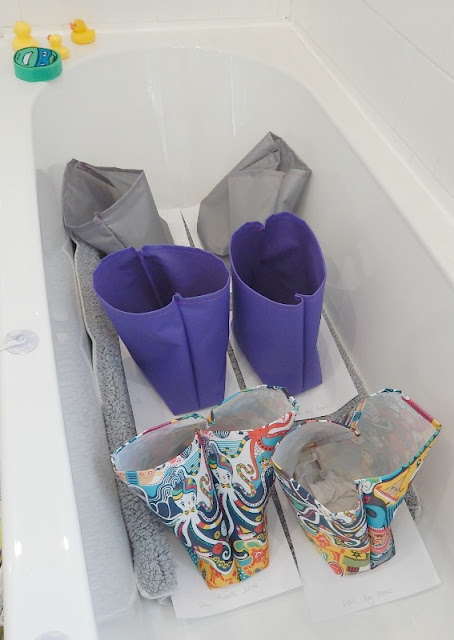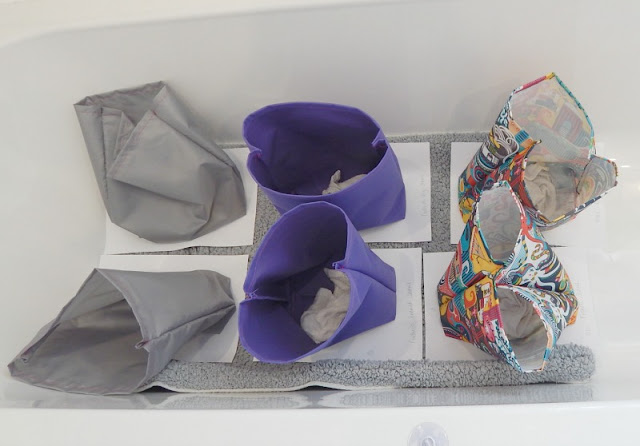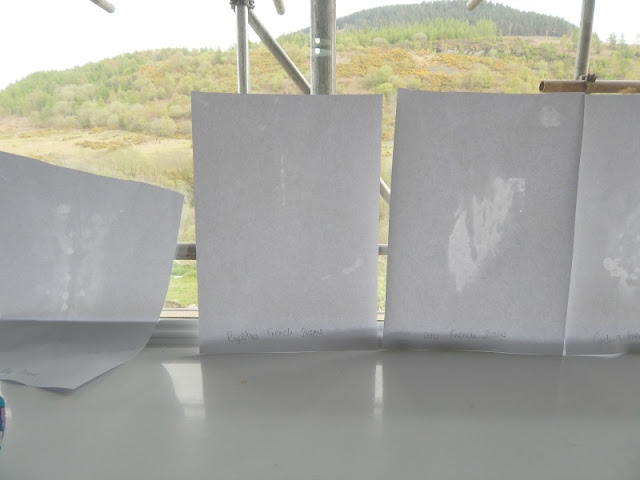Hello! When designing the August’s Bag of the Month Club pattern, The Swim & Gym bag, I thought I’d better do a few experiments.
What can you do with waterproof fabrics?
I’d never worked with waterproof fabrics before, and I read a lot of conflicting things online about what you can and can’t do with them.
Some sites said that if you tumble dry them after sewing it’ll close the holes, others said DON’T tumble dry. Some sites said ironing (with a cloth) would seal sewing holes, others said it wouldn’t make a difference.
Some sites said to use French seams, others said to use simple seams. It got complicated, you know?
So I got me some mini bags sewn with different fabrics, and tried different seam finishes on them.
To be scientific I did the same seam finishes on three different fabrics. I used PUL, thin ripstop, and Cordura.
The finishes I used were simple seams and French seams.
How waterproof are waterproof fabrics? Experiment One:
I laid down a bath mat in the bath (to prevent water transfer), then a sheet of paper with the name of the material & technique written on (in pencil), then each bag. I plopped a fairly wet (clean of course) flannel into each and left them for an hour. So far I’ve amazed myself at my scientificness!
 |
| Duck family in charge of Quality Control |
When I went back, not one of the pieces of paper had even the barest hint of moisture on, so I figured I’d better get serious.
How waterproof are waterproof fabrics? Experiment Two:
I poured 100ml of water into each bag, on top of the flannels, and left for another hour.
 |
| Cordura had the most stability by far! |
When I went back, I lifted each bag directly upwards and off the paper. The cheap, thin ripstop with French seams had the best water retention by far… surprisingly so! However, it was an absolute pain to sew with, so I nixed it and tried to think up a better solution!

How waterproof are waterproof fabrics? Experiment Three:
In the end, I had the answer magically come to me in a dream (don’t you all dream about work?) and I went for Self bound seams. I have used both Cordura, and then Faux leather with a PUL lining, and both have been great at retaining water in actual real life use.
 |
| Comparing results |
Final thoughts on waterproof fabrics
If you wanted to make sure it was really, really waterproof, you could always try some seam tape, which you iron over the seams to ensure a waterproof finish.
Overall I was very impressed with each small bag’s ability to not leak when faced with a damp flannel, and it’s proved to be similar when bringing home wet bathers!
I’m not always so scientific in my design process, but this time I was, and thought you’d like to see some of my research!
I am enjoying seeing the Swimming Jims popping up in the BOMC facebook group, I can’t wait to see more!
The Swim & Gym sewing pattern is now available on general release through my shop right here! Get your downloadable PDF sewing pattern now at www.mrs-h.com/swimming-jim.html